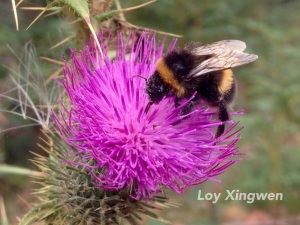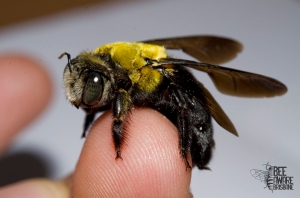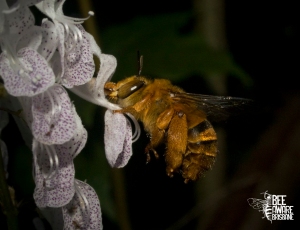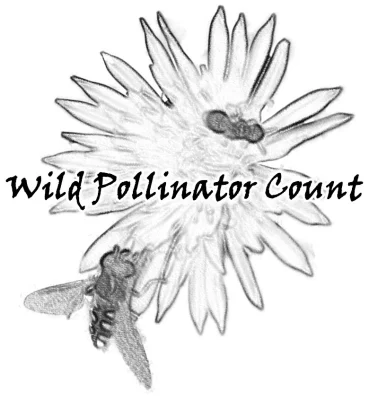In February 1992, in a garden in the waterfront suburb of Hobart, Battery Point, a couple of bumblebees turned up. They were Bombus terrestris, the large earth bumblebee, and their presence was a surprise, given that no native bumblebees exist in Tasmania or mainland Australia. At first only two bees were seen, but by the following year they were popping up all around Hobart. It is highly likely that one or a few bumblebee queens had made it to Tasmania by boat from New Zealand, where they persist in successful, long-term, feral populations. The Battery Point bees could have arrived as either accidental stowaways, or as a deliberate and illegal introduction by an unknown offender? Now, exactly 24 years later, bumblebees have successfully established across every region of Tasmania, and are found in both urban environments and a wide range of native vegetation types.
Early this month an Australian Senate Committee was established to assess “The risks and opportunities associated with the use of the bumblebee population in Tasmania for commercial pollination purposes”. The committee lists seven focus points related to the potential use of bumblebees in commercial crop pollination, which they plan to investigate further.

Bumblebees and crop pollination
For some time, glasshouse farmers (in particular tomato and capsicum growers, both in Tasmania and on the Australian mainland) have been calling for the legalised use of introduced bumblebees in the pollination of their crops. Evidence from overseas shows that bumblebees are very effective pollinators of crops such as tomatoes, capsicums, eggplants, chillies, and blueberries. The reason for this is that these plant species benefit from a type of pollination known as ‘buzz pollination’. The pollen from buzz pollinated plants is presented in their flowers differently to the way it is in most other types of flowering plants. In ‘typical’ flowers, the pollen is presented on the outside of the male part of the flower, the anther. In plants that are buzz pollinated, however, the anther is tubular in structure, and the pollen is presented inside this. To get the pollen out of this tube most effectively the flower is vibrated, to shake the pollen out of the end of the tube.
Enter the buzz pollinating bees. Buzz pollinating bee species can hold on to a flower and vibrate their flight muscles without flying. Basically they put their wings into neutral and rev the engine. This makes their body ‘buzz’ at high frequency. On a plant with tubular anthers (actually called poricidal anthers) this is enough to shake the pollen free (have a look at close up video of this here and here). Not all pollinators can perform buzz pollination though. In fact, most don’t. European honeybees don’t buzz pollinate, and neither do our tropical and sub-tropical native stingless bees. Bumblebees can buzz pollinate, and so can some of our native bee species, such as blue banded bees, teddy bear bees, carpenter bees, and some of the ground nesting Lasioglossum and Lipotriches species. While crop plants that have poricidal anthers don’t necessarily require buzz pollination to set fruit, they do produce more, and bigger, fruit, if their flowers do get buzzed (because more pollen transfer can result in more ovules getting fertilised, which can result in more seeds in the fruit, which can result in bigger fruit).
So what’s so special about bumblebees if there are native bees that can buzz pollinate too? Well, the advantage of bumblebees is that they are social bees (i.e. they live in colonies of many individuals), and we can domesticate them easily and keep them in boxes. These boxes (usually made of cardboard) can be moved to wherever we want them, such as into a glasshouse full of tomatoes. This is exactly what glasshouse tomato farmers do in places like Europe and North America, where bumblebees are native. Currently it is illegal for Tasmanian farmers to actively keep introduced bumblebees and put them in glasshouses. As such there is no Tasmanian ‘bumblebee-keeping’ industry.
So what do Tasmanian glasshouse tomato farmers do now without these bees? Well, they use electric vibrating wands to manually ‘buzz’ pollinate their flowers. This is a rather laborious job that requires someone to walk the rows and ‘buzz’ every single flower. Although, in Tasmania there are not actually very many glasshouse tomato farms, and the individual glasshouses are generally not very big, so it’s not quite as epic as it might seem. For tomato plants at home (and chillies etc too) you can use a musical tuning fork or electric toothbrush for the same purpose. Try it, it’s fun.
Bumblebees and biodiversity
So, how have invasive bumblebees interacted with native organisms in Tasmania since their arrival? Bombus terrestris originates in Europe, and so too do many of Tasmania’s introduced plants and weeds. There is evidence that since bumblebees arrived, some of these introduced plants and weeds are being better pollinated than they were before, because they now have their most efficient pollinator with them, and as a result are producing more seed and spreading across landscapes more. There is also evidence that bumblebees have displaced native pollinators from native plants, which has the potential to reduce the seed set of these plants, and negatively affect the native pollinators. Bumblebees have also been seen to ‘rob’ nectar from some native plants, without pollinating them in the process, potentially lowering their seed output. Other negative impacts that introduced bumblebees can have on native biodiversity include competition with native flower visiting animals for floral resources, as well as potentially competing with native animals for nest sites. So, similarly to a range of other cases of species being introduced outside their native range, bumblebees have a clear negative impact on Tasmania’s biodiversity (although we actually still know very little about how they interact with Tasmanian biodiversity). Their effect on mainland biodiversity would likely be very similar, but on a much larger scale. Introduced bumblebees also pose some potential risks to the European honeybee industry, as they have the potential to transmit pests and diseases.
What about native bees for glasshouse pollination instead?
As already mentioned, there are a range of native Australian bees that are buzz pollinators, and therefore have potential for utilisation in the pollination of crops that benefit from being buzzed, such as tomato. However, their potential as managed or semi-managed pollinators in glasshouses is currently inhibited by a number of difficulties, and little research. All our native buzz pollinating bees are solitary, or semi-social, and as such we can’t simply put hives of them in glasshouses when we want to. Although we have some techniques for ‘semi-domesticating’ some species (e.g. blue banded bees), keeping these bees is relatively difficult, and rather understudied. Encouraging native buzz pollinating bees outside on open air farms is a little easier, but trying to encourage or manage them inside glasshouses posses a number of hurdles that need to be overcome. There is potential that we will be able to better utilise some of these native species into the future, but for now they don’t really present the same buzz pollination ‘quick fix’ that bumblebees do.


A pollination predicament
The Australian glasshouse tomato industry continues to push for the legalised use of bumblebees for their pollination needs. It could be argued that given that feral bumblebees now persist in the wild in Tasmania, it would do no harm to take advantage of them and manage them for use in glasshouse crop pollination. Unfortunately, it isn’t nearly as clear-cut as this. The significance of this debate actually has little to do with Tasmania, and much more to do with the introduction of bumblebees to the mainland.
It is highly likely that through legal management and production of bumblebees in Tasmania, the relative ease at which mated queens will then be able to be obtained will rapidly increase the chances that bumblebees will be illegally imported to mainland Australia. Should they become feral on the mainland, then the same debate we’re having now for Tasmania is likely to follow for the mainland. Mainland glasshouse farmers would also stand to reap rewards from bumble bee pollination, and so would be keen to take advantage of the presence of feral bees in arguing for the legislation of management. In fact, in terms of nation-wide glasshouse tomato production, Tasmania is a drop in the ocean compared with the mainland production. Glasshouse tomato agribusinesses across mainland states stand to make significant economic gains from the legal use of bumblebees in their glasshouses. At the end of the day it is very difficult to get approval to import a non-native species to Australia, but it can be somewhat less difficult to get approval to make use of a non-native species that is already resident. Previous attempts to legislate the importation of bumblebees to mainland Australia for the purpose of glasshouse pollination have failed, but should a feral population of bumblebees become established on the mainland there is little doubt that glasshouse growers would be granted permission to actively manage them, as they so desire.
It is realistic to fear that even with strong legal restrictions from importing bumblebees to the mainland, an industry of active management in Tasmania will result in the eventual illegal introduction to mainland Australia. Bumblebees on mainland Australia would be one more ecological disaster to contribute to the country’s biodiversity woes. It can be fairly easily argued that this whole debate about management in Tasmania is simply a stepping-stone being used by large national glasshouse tomato businesses towards a future where they can legally use bumblebees for pollination in mainland glasshouses.
Submissions to the Senate Committee are open until the 3rd of March. For more information on submissions, go to: http://www.aph.gov.au/Parliamentary_Business/Committees/Senate/Environment_and_Communications/Bumblebees
Tobias Smith, Feb 2016

I could be wrong, but I specifically remember reading an article on the Mercury many (maybe 12-15) years ago about UTAS researchers intentionally introducing bumblebees to Tasmania to improve pollination (perhaps it was a controlled trial as opposed to large scale introduction). I was dumbfounded at the arrogance shown in assuming nothing would go wrong, especially given past experiences with introduced species. Have you heard anything about such trials?
LikeLike